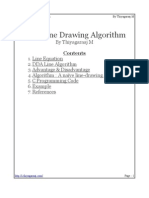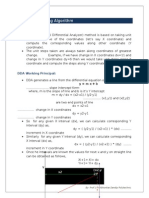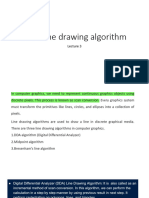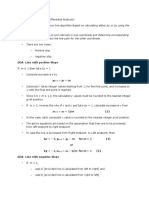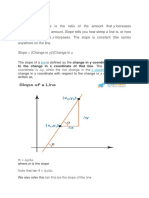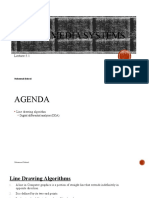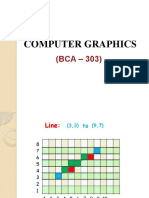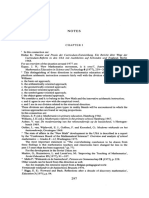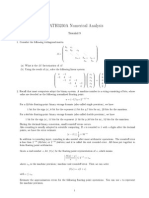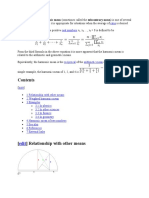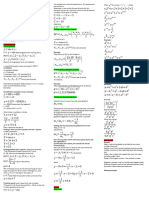0% found this document useful (0 votes)
161 views5 pagesDDA Line Drawing Explained
The DDA (Digital Differential Analyzer) algorithm is an incremental method for drawing lines on a digital display. It works by calculating the next pixel coordinates (x,y) in the line based on the results of the previous step, using simple addition rather than multiplication. The algorithm increments x and y by small, constant amounts proportional to the line's slope to generate each new point. It has advantages of being fast and avoiding duplicate points, but rounding errors can accumulate over many steps.
Uploaded by
Neha KiradCopyright
© © All Rights Reserved
We take content rights seriously. If you suspect this is your content, claim it here.
Available Formats
Download as TXT, PDF, TXT or read online on Scribd
0% found this document useful (0 votes)
161 views5 pagesDDA Line Drawing Explained
The DDA (Digital Differential Analyzer) algorithm is an incremental method for drawing lines on a digital display. It works by calculating the next pixel coordinates (x,y) in the line based on the results of the previous step, using simple addition rather than multiplication. The algorithm increments x and y by small, constant amounts proportional to the line's slope to generate each new point. It has advantages of being fast and avoiding duplicate points, but rounding errors can accumulate over many steps.
Uploaded by
Neha KiradCopyright
© © All Rights Reserved
We take content rights seriously. If you suspect this is your content, claim it here.
Available Formats
Download as TXT, PDF, TXT or read online on Scribd
/ 5

















